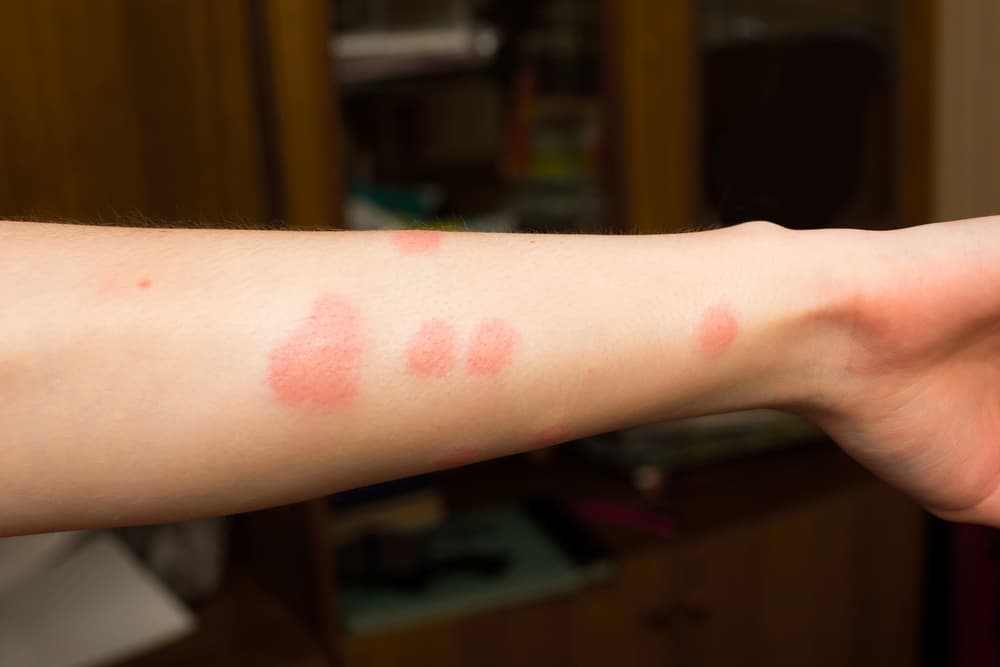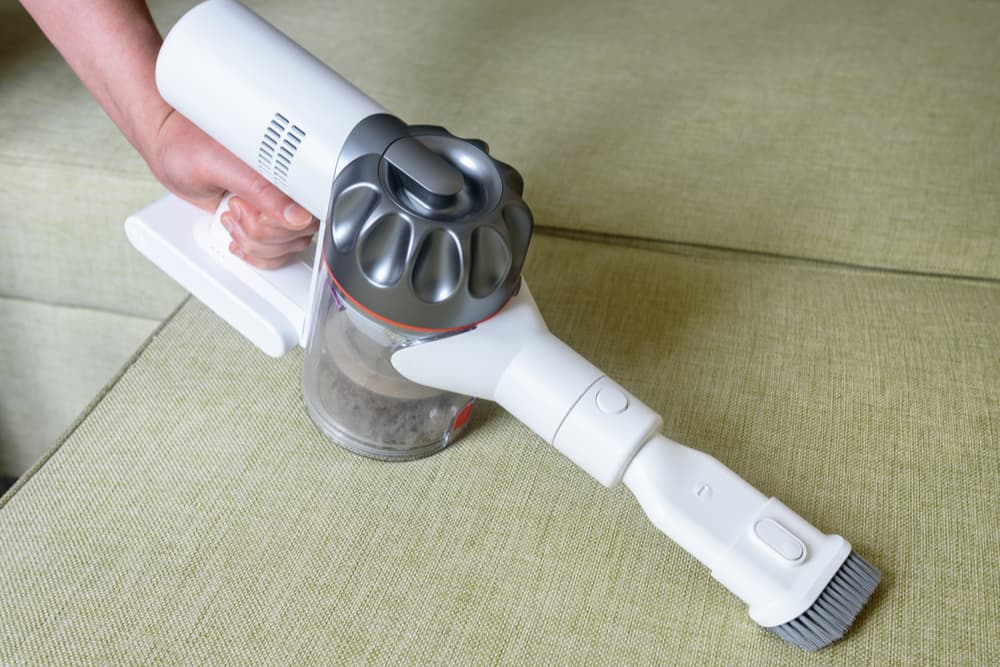Can Humans Get Fleas From Dogs?

Fleas…on humans? Fleas are uncomfortable for our dogs, can be difficult to eliminate, and can spread to other family pets and throughout the home if not treated and addressed properly. While most people know that fleas can infest dogs and what that looks like, you may be wondering can humans get fleas from dogs?
Get ready to find out! Let’s explore this question, so you can understand if you’re at risk of getting fleas from your dog. We’ll also delve into what flea bites look like on people, so you know what to watch out for. Finally, we’ll talk about how using a monthly flea preventative for your dog, like NexGard Chewables, can help protect your pet…and your household.

Can Humans Get Fleas from Dogs?

The short answer is yes, fleas that live and feed on dogs can jump onto humans and bite us. The cat flea, Ctenocephalides felis, is the most common flea in the U.S., and the most common flea seen on cats and dogs. While the cat flea will bite a variety of mammals including humans, we aren’t its preferred host. However, when a flea emerges from a cocoon, it will jump on the nearest warm mammal, and that might be a person if there aren’t any other options available.
How Can Humans Get Fleas from Dogs?
If your dog has fleas, they may jump off your dog, onto your skin, and bite you. In other scenarios, fleas can infest the home environment (carpet, bedding, cracks and crevices, etc.), and then jump onto a human and bite them. Fleas may also lay eggs in the home environment that can hatch, develop, and bite humans as well.
Can Fleas Live on Humans?

The good news is that fleas that live on dogs do not “live” on humans in the same way. There are a few reasons for this: first, flea bites are itchy and hard to miss, and most humans will notice fleas on themselves right away. Fleas do not reproduce on humans because fleas need fur or feathers to hide and several days to feed in order to lay viable eggs. Fleas cannot bite through clothing, however, rarely they may hide under clothing and repeatedly bite a human.
Can Humans Get Fleas in Their Hair?
Fleas rarely infest human hair: most flea bites are located around the feet and ankles because that is as high as the flea can jump and get a quick bite before being noticed by a person and picked off. It’s even hard for fleas to jump and land on us! Accordingly, humans do not typically have flea dirt on their body or in their hair because flea dirt is the digested blood in feces excreted by fleas, and fleas do not typically stay undisturbed on humans long enough for that to happen.
Most fleas will bite a human two or three times, realize we aren’t the preferred “meal,” and then jump off. If your dog has fleas, however, and sleeps with you, you may find flea dirt in your bed.
What Do Flea Bites Look Like on Humans?

Flea bites in humans are usually smaller than mosquito bites, and occur in clusters (often three bites) around the feet, ankles, near the edges of tight-fitted clothing (like socks), or in moist bendy parts of the body, like armpits or legpits. They may be surrounded by a red halo. Flea bites may be very itchy or minimally itchy, it depends on the person. Flea bites look similar to bed bug bites, but bed bug bites are usually on around the face, neck, hands, and arms. If in question, consult with your doctor.
Can Humans Get Sick From Flea Bites?
If you are sensitive or allergic to flea bites, you can develop hives or a rash. Furthermore, scratching at the bites can cause a secondary bacterial infection.
While plague is commonly transmitted in the U.S. by ground squirrel fleas and not the fleas that live on dogs, there are some cat flea bite-related diseases that you should know about. Typhus is transmitted by infected cat fleas and their flea dirt; it is rare in the U.S. with most cases reported in California, Texas, and Hawaii, according to the Centers for Disease Control.
If a human accidentally swallows a dog or cat flea infected with a common tapeworm, the human can become infected with tapeworms. Small children are much more at risk than adults because of their close proximity to the ground and their propensity to put everything in their mouth.
How to Get Rid of Fleas on Humans

If you are getting bit by fleas, then you must eradicate fleas on all your furry pets and in your environment, otherwise the pets will get continually infested and you will keep getting bit. Ask your veterinarian for the best flea treatments for your area. A product that quickly kills adult fleas and an insect growth regulator that prevents eggs from hatching is usually recommended, and all pets in the household (including cats!) need to be treated to prevent reinfestation.
For dogs, NexGard and Simparica TRIO are veterinarian-recommended products available that can kill fleas quickly before they start reproducing, and keep killing fleas for a month.


For cats, Revolution or Advantage II are some of the products available for flea control. These products require a prescription, and your veterinarian can advise you on how often to administer them to your pets. If your dog swims regularly, inform your veterinarian, as this may impact how long a flea product lasts. Follow all instructions exactly or risk reinfestation.
In addition to killing fleas on your pets, you need to get rid of fleas in the environment. This is particularly important if your pets get reinfested even while using products. Remember: If you are seeing fleas on your dog or getting bit, then there are likely fleas of all life stages developing in your home. (Ew! That is called the biomass). If this is the case, the following tips will help you:
- Vacuum all flooring, throw rugs, and both sides furniture cushions every couple of days for a month. This will suck up adult fleas, any developing immature fleas, and flea eggs. If you have a bad infestation, vacuum daily for one month and then once a week for an additional two months to eradicate the flea biomass. (It only takes 24-48 hours for fleas to start laying eggs.) Throw away the vacuum bag at least twice a week, as it may contain developing fleas.
- Sprinkle diatomaceous earth in cracks and crevices. This dries fleas out, and dried out fleas are dead fleas.
- Wash all pet bedding every couple of days. If your pet sleeps with you, wash your bedding every couple of days.
- Clean pet carriers daily, or bar access.
- Use an outdoor inverted aerosol insecticide where fleas like to hide (under decks, warm, moist areas).
- Purchase flea traps, and change out weekly for two months.
- If you do all this and nothing helps, consult with a local exterminator.
How to Prevent Flea Bites on People and Pets

If you keep fleas off your pets and your pet’s environment, then flea bites should cease. Here are some tips to stop the problem before it starts:
- Keep grass mowed short, clean up and remove all leaf litter, and bar access to wildlife dens or under decks where fleas like to lurk.
- Utilize flea control products correctly per label instructions during flea season on all pets (including cats!). In warm areas, this may require year-round flea control.
- If wildlife frequent your yard, utilize outdoor insecticides, or talk to your landscaper about applying professional products.
- Regularly vacuum carpets, rugs, and furniture, including under cushions.
- Keep your house clean: sweep floors and mop regularly.
- Wash pet bedding on hot at least monthly, preferably every two weeks.
- Comb your dog with a flea comb a couple times a week. If you find fleas, dip them in soapy water to drown them.
As always, it is recommended to enlist the help of your friendly local veterinarian if you have fleas biting you or your pets.









